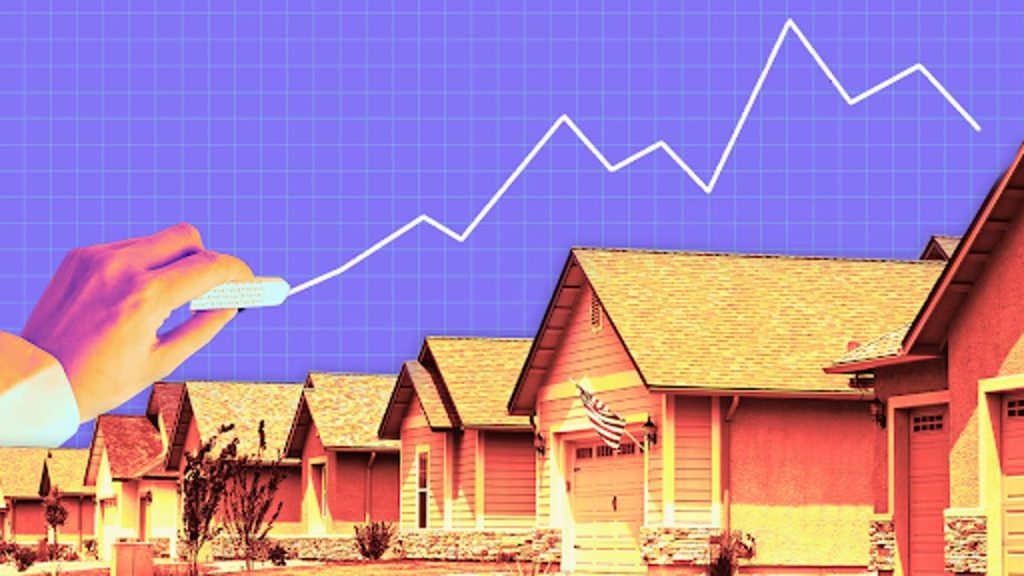The housing market in early 2025 continues to present significant affordability challenges for prospective buyers, marked by stubbornly high mortgage rates and listing prices. The average rate for a 30-year fixed mortgage hovers around 7%, mirroring the levels seen in the previous year. This persistence is attributed to several interconnected economic factors, including inflation, Federal Reserve policies, bond market performance, GDP growth, and employment figures. Experts anticipate that a substantial decrease in mortgage rates before the spring home-buying season is improbable, given the current economic climate. The recent robust economic data, coupled with speculation about the potential inflationary impact of the new administration’s economic policies, suggests a more gradual approach to interest rate cuts by the Federal Reserve. This inherent uncertainty underscores the volatile nature of mortgage rate forecasting. Prospective buyers are advised to prioritize finding a home within their budget and making as substantial a down payment as feasible, rather than attempting to time the market.
Mortgage rates are projected to remain above 6.5% in the coming months, barring significant market fluctuations. A potential decline to around 6.25% later in the year is contingent on continued cooling of inflation and the Federal Reserve’s ability to implement its planned interest rate cuts. While these rates appear high compared to the historically low rates observed during the pandemic era, experts deem a return to sub-3% rates for 30-year fixed mortgages unlikely without a severe economic downturn. Historically, the average rate for a 30-year fixed mortgage has been around 7% since the 1970s. Only a substantial economic shock, such as a recession or a sharp spike in oil prices, could trigger a dramatic plunge in mortgage rates.
The incoming administration’s economic policies represent a significant factor influencing mortgage rates. Proposals for tax cuts and tariffs could stimulate demand, expand deficits, and potentially reignite inflation, to which mortgage rates are highly sensitive. These policies, if implemented more rapidly than anticipated by the markets, could lead to a corresponding surge in mortgage rates. Elevated inflation would also likely prompt the Federal Reserve to postpone future rate reductions. While the Federal Reserve exerts influence over the general direction of borrowing rates, it does not directly control the mortgage market. However, investor attention to the Fed’s outlook on rate adjustments significantly impacts their trading strategies and risk assessments, often leading market forces to react in anticipation of Fed policy moves.
The trajectory of 30-year fixed mortgage rates closely follows bond yields, particularly 10-year Treasury yields. Anticipation of rising unemployment typically leads to a decrease in bond yields and mortgage rates. Conversely, if economic outcomes deviate from market expectations, yields can fluctuate rapidly. Geopolitical events, including military conflicts and elections, also exert influence on mortgage rates. Political instability can generate economic uncertainty, translating into increased volatility in bond yields and mortgage rates. For mortgage rates to reverse course, bond market investors need to be convinced of a cooling economy. Without a renewed downturn in inflation or a sudden weakening of labor market conditions, mortgage rates are expected to remain near 7% for the foreseeable future.
The current housing market is characterized by unaffordability stemming from a confluence of factors: high mortgage rates, a persistent housing shortage, elevated home prices, and diminished purchasing power due to inflation. Low housing inventory continues to be a major issue, with most markets experiencing supply levels around half of what is considered balanced. The housing shortage is estimated to be around 3.7 million homes. The historically low mortgage rates of around 3% seen in early 2022 have more than doubled as the Federal Reserve raised interest rates to combat surging inflation. These high rates have priced many prospective buyers out of the market. The “rate-lock effect” further contributes to the inventory shortage, as homeowners with low mortgage rates are reluctant to sell, limiting the availability of resale properties.
Despite limited home buying demand in recent years, home prices remain high due to the lack of inventory. The median US home price continues to rise. Inflation, which increases the cost of goods and services, erodes purchasing power and influences mortgage rates. Lenders typically raise interest rates on consumer loans during periods of high inflation to maintain profitability. Prospective homebuyers are advised to establish a clear budget, build a strong credit score, save for a larger down payment, shop around for mortgage lenders, and consider the option of renting. A larger down payment can secure a lower interest rate and eliminate private mortgage insurance. Comparing loan offers from multiple lenders can also help negotiate a better rate. Mortgage points, which can lower the mortgage rate, are another option to consider. Each point costs 1% of the total loan amount and reduces the rate by 0.25%. Ultimately, the decision to rent or buy depends on individual circumstances and financial goals.









